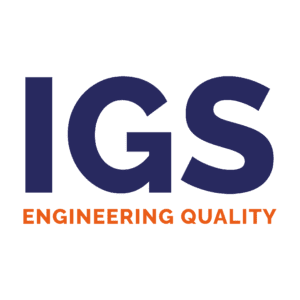
Harnessing the Power of AI in Quality Engineering
Harnessing the Power of AI in Quality Engineering

This blog explores the role of AI in Quality Engineering is helping us at IGS in revolutionizing testing strategies, enhancing efficiency, and ensuring software reliability. From smart automation to predictive analytics to enhancing continuous testing, AI is helping empower teams to deliver efficient and faster software releases without compromising quality.
The AI Revolution in Quality Engineering: From QA to AI-Driven QE
The old-school/traditional approach to quality assurance (QA) (e.g., waterfall) focuses on post-development testing, where defects are identified and fixed after a software/software component is built. However, as systems have grown to be more complex and dynamic, this reactive approach has proven to be insufficient & inefficient. AI in Quality Engineering shifts the focus from mundane Defect Detection to Defect Prevention by integrating quality engineering practices throughout the product development life cycle. By leveraging AI-driven tools and techniques, organizations can automate testing processes, predict potential issues/anomalies in advance, and continuously monitor system performance in real time. This proactive approach ensures that quality is not an afterthought but an integral part of the development process.
Let us look at some of the key areas that can be enhanced with the help of Artificial Intelligence that can help refine and define the new age quality engineering solutions.
Benefits of AI in Quality Engineering: Redefining Efficiency
One of the many and one of the most significant impacts of AI in Quality Engineering is in test automation, underscoring the significance of quality engineering in streamlining processes and ensuring accuracy. Traditional test automation relies on pre-generated scripts that require constant updating as the software evolves during the life cycle. This can be time-consuming and prone to human error. AI-driven test automation overcomes such and many other challenges by using machine learning (ML) algorithms to learn from test executions in the past and adapt to changes in the codebase. AI tools can automatically generate test cases based on the analysis of the code, reducing manual intervention. These quality engineering tools can also help prioritize tests based on risk factors, ensuring that critical areas are targeted first. This not only speeds up the testing process but also improves accuracy by focusing on high-risk areas that are more likely to be erroneous and fail, causing defects. For example, AI-powered systems can analyse historical data from previous test runs to identify patterns that may indicate potential issues. By targeting these high-risk areas, testers can allocate their efforts more effectively and reduce the likelihood of critical defects slipping through.
This approach can also help achieve a quick turnaround during patch/hotfix releases that concentrate on a particular area/code that needs minor tweaks.
Key Areas Where AI Impacts Quality Engineering
Intelligent Test Case Generation: Enhanced Coverage
Another important area where AI in Quality Engineering is making a significant impact is in generating intelligent test scenarios/ test cases. Traditional methods often rely on human testers to manually create test cases based on predefined requirements under the impression/belief that the Quality Engineers have had a good and deep understanding of the requirements. This process can be labour-intensive and may not always cover all possible scenarios (positive and negative). AI-powered tools can automatically generate test scenarios/test cases by analysing the underlying code or system architecture. These tools use machine learning algorithms to identify potential edge cases or scenarios that may not have been considered during manual test case creation. By doing so, they help ensure more comprehensive coverage and reduce the risk of undetected defects. Organizations follow various formats/templates when drafting test scenarios/cases. Using the right approach can even help generate test scenarios/test cases using the exact template the organization follows, thereby reducing the time required for reviewing and formatting.
Moreover, AI-driven test case generation can adapt over time as new features are added or existing ones are modified. This flexibility allows for continuous performance testing throughout the development process without requiring extensive manual updates.
Predictive Analytics for Defect Detection: Proactive Quality Assurance
One of the most powerful applications of AI in Quality Engineering is its ability to predict defects before they arise. With the help of analysing vast amounts of data from previous test runs, production logs, and end-user feedback, AI systems can help indicate possible issues/failures in future releases by identifying patterns derived from executions in the past. Predictive analytics allows teams to take a proactive approach to defect management by addressing the necessary issues/problems in the code/configurations before they manifest in production environments. This not only improves software reliability but also reduces the cost associated with fixing defects later in the development cycle. For instance, an AI system might detect and alert that certain combinations of inputs/test scenarios of a feature are more likely to cause failures based on historical data. Updated with this information, testers can consider wider test data sets and detailed testing steps to focus their efforts on these high-risk areas during future testing cycles.
Anomaly Detection & Alert Systems through Continuous Monitoring:
Ensuring Stability & Reliability
In addition to Predictive Analytics, AI in Quality Engineering plays a crucial role in enabling and assuring continuous monitoring by detecting anomalies in real-time data streams from production environments. Traditional monitoring systems rely on predefined benchmarks/thresholds or rules that may not always capture subtle deviations from normal behaviour. AI-based anomaly detection algorithms can analyse large volumes of data in real time and identify patterns that deviate from expected behaviour without relying on predefined rules. This allows for faster identification of potential issues and enables teams to respond quickly before they escalate into bigger problems, thus saving time, energy and cost. For example, an OTT platform might experience a sudden spike in playback failures due to an underlying issue with its CDN integration. An AI-powered monitoring system could detect this anomaly early by recognizing deviations from normal playback patterns, alerting engineers, and aiding them to fix the issues before customers are impacted significantly.
Regression Testing Optimization with AI: Reducing Time and Effort
Regression testing is performed to ensure the new code changes have not introduced unintended side effects or break existing functionality within an integrated system. However, running exhaustive and detailed regression tests after every code change can be time-consuming—especially when dealing with large-scale applications containing hundreds or/of thousands of lines of code. AI in Quality Engineering helps optimize regression testing by intelligently selecting which tests should be executed based on factors such as code coverage metrics or historical defect rates associated with specific modules or components or features within an application’s architecture. By focusing only on such identified areas most likely affected by recent changes, rather than executing the entire Regression suite —AI-driven regression testing significantly helps reduce both execution time & resource consumption while maintaining high levels of confidence regarding overall system stability post-deployment. This helps create bandwidth for the QE team to focus on other areas that require attention or even focus on training programs to cope up with the changes/updates in technology.
Prioritizing Tests: In-Depth Testing where it Is Required
In complex software systems where multiple components/modules interact with each other across various layers (e.g., databases interacting with APIs), determining which tests should take priority during a given cycle becomes painstakingly challenging over time—especially when faced with skewed deadlines imposed by agile methodologies like Scrum/DevOps workflows demanding frequent releases/frequent updates depending upon project scope/scale.
Embracing AI for the Future of Quality Engineering
As we stand at the junction of rapid technological advancements and evolving software demands, AI in quality engineering is proving to bring in a transformation that will change how the world looks and work towards better application development. The integration of AI into QE processes is not just a trend but a necessity for organizations striving to maintain high-quality standards while accelerating delivery timelines.
From test automation to predictive analytics and intelligent anomaly detection, AI in Quality Engineering is redefining how quality is embedded throughout the Software Development Life Cycle (SDLC). By leveraging Artificial Intelligence, teams can generate smart test scenarios automatically, use predictive analysis to detect and alert possible issues —all while optimizing resource allocation and reducing time-to-market. These capabilities enhance testing efficiency while keeping software systems remain robust and reliable even as with the complexity increasing over time.
Conclusion:
Having seen the outcomes so far and looking ahead, further advancements in AI in Quality Engineering will continue reshaping how we approach quality assurance across industries with the changing times and advancements. Organizations that are ready to embrace or are embracing these technologies today will be better positioned to navigate challenges in the future while delivering exceptional products faster without compromising on quality standards. In conclusion, harnessing AI in Quality Engineering isn’t just about keeping up with technological trends—it’s about redefining how we think about quality itself.
Frequently Asked Questions
1. How is AI transforming traditional Quality Assurance (QA) into AI-driven Quality Engineering (QE)?
AI is revolutionizing traditional QA by shifting the focus from defect detection after development to defect prevention by defect detection throughout the Software Development Life Cycle (SDLC). Traditional QA often relied on post-development testing, which could be inefficient due to the complexity of modern systems. AI-driven QE integrates quality practices early in the development process, automating testing, predicting potential issues, and continuously monitoring system performance. This proactive approach or the Shift-Left approach ensures that quality is built into every phase of development, enhancing overall software reliability and efficiency.
2. What are the key benefits of AI in test automation for Quality Engineering?
AI significantly enhances test automation by:
- Automatic generation test scenarios/cases based on requirement analysis, reducing manual effort.
- Adapting to changes in the codebase through machine learning algorithms, minimizing the need for frequent script changes/updates.
- Risk-Based Testing: Prioritizing tests based on risk factors, ensuring that high-risk areas are tested first.
These capabilities lead to faster testing processes, improved accuracy, and better resource allocation, ultimately speeding up software releases without compromising quality.
3. How does AI improve test case generation in Quality Engineering?
AI-powered tools can automatically generate smart test cases by analysing system architecture/application requirements and/or underlying code. These tools use machine learning algorithms to identify potential edge cases or scenarios that may not have been considered during manual test creation. This results in more comprehensive coverage, reducing the risk of leakage of undetected defects. Moreover, AI-driven test case generation can adapt to changes in existing requirements/implementations or the addition of new requirements during the lifecycle, ensuring continuous testing without extensive manual updates.
4. What role does predictive analytics play in AI-driven Quality Engineering?
Predictive analytics is one of the most powerful applications of AI in Quality Engineering. By analysing huge datasets from previous test runs, production logs, and user feedback, AI systems can predict potential defects before they arise. This allows teams to take a proactive approach to defect management by addressing issues before they start appearing in production environments. Predictive analytics improves software reliability helps identify and fix them early thereby reducing the cost associated with fixing defects later in the development cycle.
5. How does AI optimize regression testing in large-scale applications?
AI helps optimize regression testing by smartly identifying tests that should be executed based on factors like code coverage metrics, previous test execution reports containing pass/fail data, or historical defect rates associated with specific modules or components. Instead of running exhaustive tests after every code change, AI focuses on areas most likely affected by recent changes. This reduces execution time and resource consumption while maintaining high confidence in system stability post-deployment










